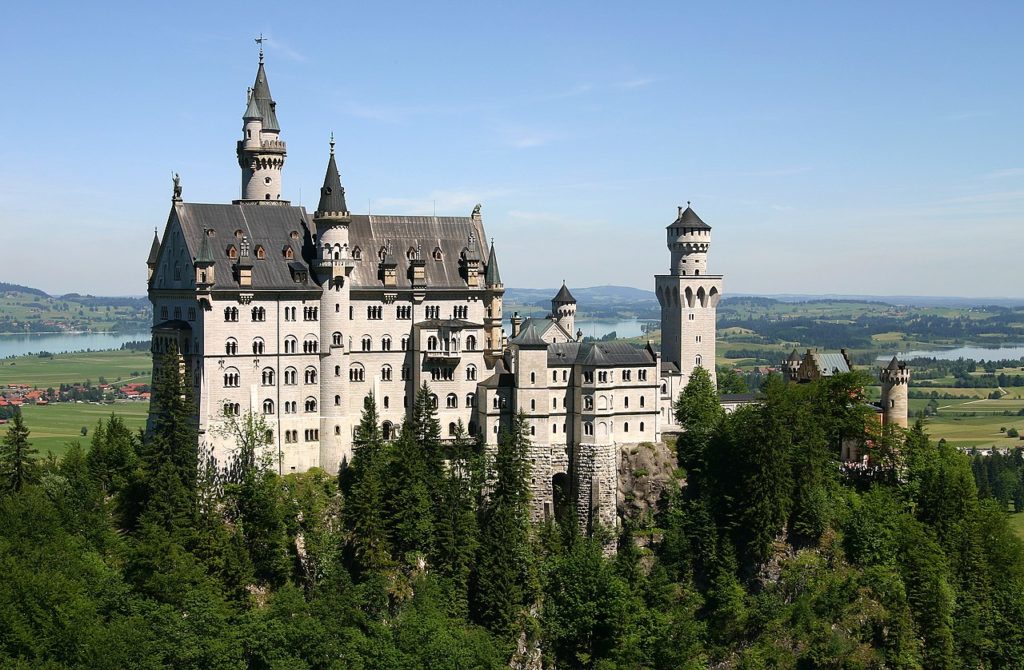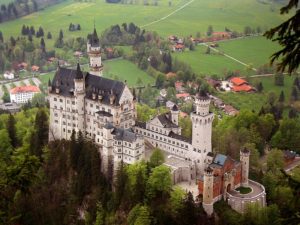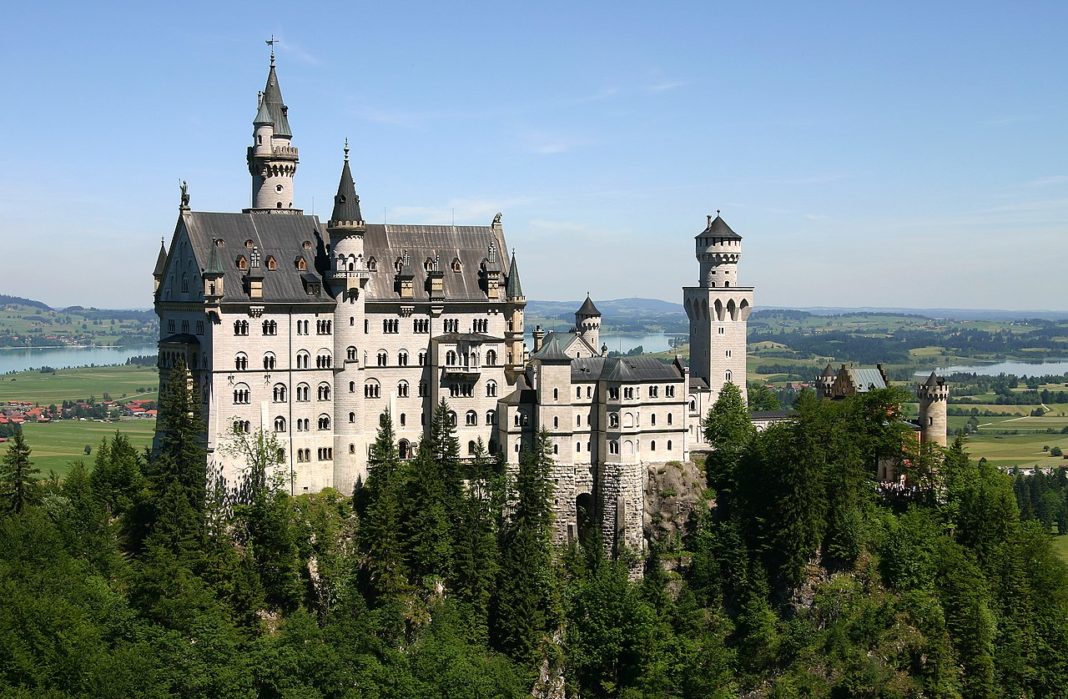Neuschwanstein Castle is a 19th-century historicist palace on a rugged hill above the village of Hohenschwangau near Füssen in southwest Bavaria, Germany.
The palace was commissioned by King Ludwig II of Bavaria as a retreat in honor of Richard Wagner. Ludwig chose to pay for the palace out of his personal fortune and by means of extensive borrowing, rather than Bavarian public funds. Construction began in 1869 but was never fully completed.

Neuschwanstein embodies both the contemporaneous architectural fashion known as castle romanticism and King Ludwig II’s enthusiasm for the operas of Richard Wagner.
The palace was erected as a conventional brick construction and later encased in various types of rock. The white limestone used for the fronts came from a nearby quarry. The sandstone bricks for the portals and bay windows came from Schlaitdorf in Württemberg. Marble from Untersberg near Salzburg was used for the windows, the arch ribs, the columns and the capitals. The Throne Hall was a later addition to the plans and required a steel framework.

The palace complex is entered through the symmetrical Gatehouse flanked by two stair towers. The western end of the courtyard is delimited by the Palas (hall). It constitutes the real main and residential building of the castle and contains the King’s stateroom and the servants’ rooms. The Palas is a colossal five-story structure in the shape of two huge cuboids that are connected at a flat angle and covered by two adjacent high gable roofs. The building’s shape follows the course of the ridge. In its angles, there are two stair towers, the northern one surmounting the palace roof by several storeys with a height of 65 meters.

The castle was intended as a private residence for the King until he died in 1886. It was open to the public shortly after his death. Since then more than 61 million people have visited Neuschwanstein Castle. More than 1.3 million people visit annually, with as many as 6,000 per day in the summer.
According to wikipedia














